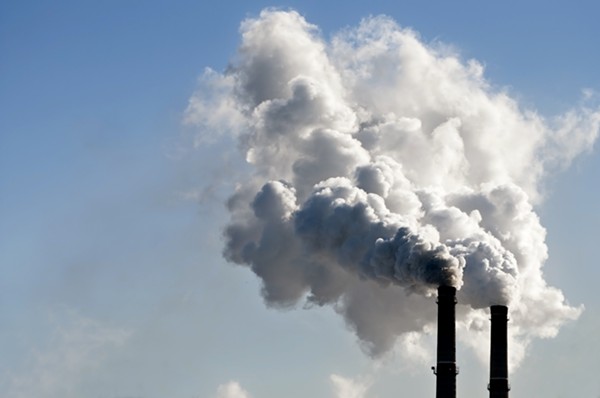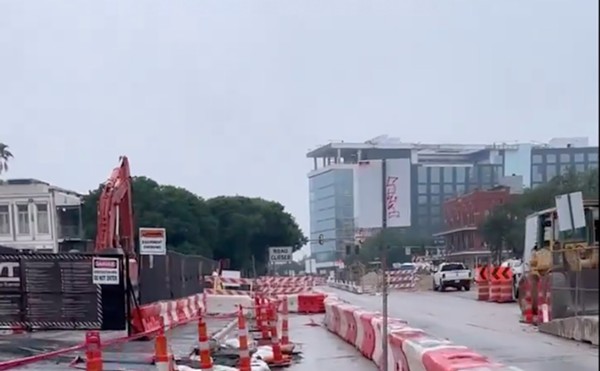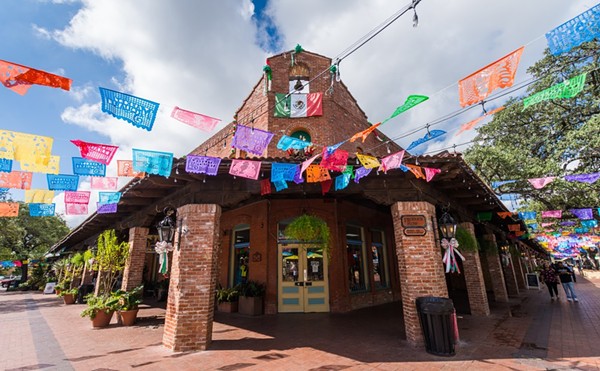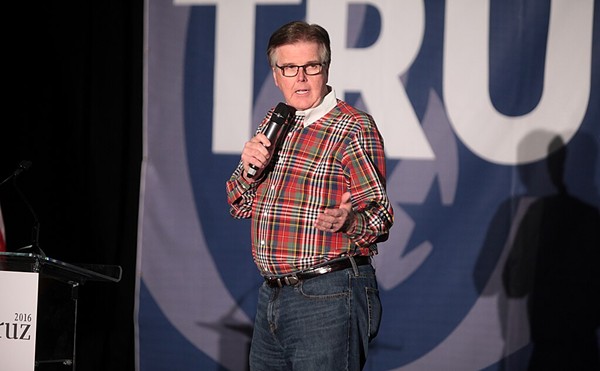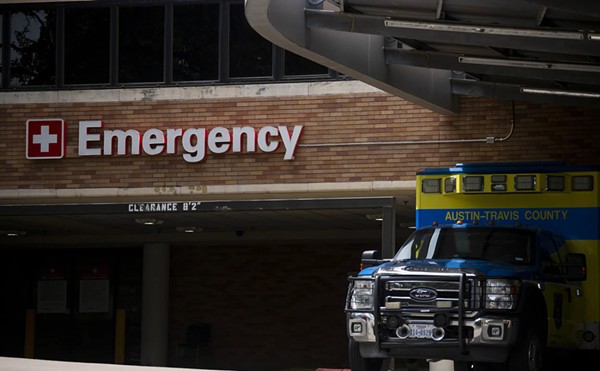San Antonio Is Closer to Finding Out How Dirty Its Air Is
By Sanford Nowlin on Thu, Apr 12, 2018 at 9:00 am
San Antonio’s day of reckoning on air quality has crept that much closer.
In a federal filing last week, the EPA said it would comply with a court-imposed July 17 deadline to rule whether the San Antonio region meets more stringent air pollution standards. Until then, the agency hadn’t said whether it planned to appeal the case in a bid to keep its original deadline of August 10.
What’s more, the agency on March 19 provided a letter to Gov. Greg Abbott saying that it would designate “at best” portions of San Antonio as “unclassifiable,” seeming to suggest the city’s likely to lose its status as the largest population center not yet declared in violation of federal air quality standards. The seven surrounding counties that make up the region would stay in attainment, according to the letter.
The EPA in 2015 released a stricter, health-based air pollution standard of 70 ppb of ground-level ozone concentrations. Bexar County’s level is currently around 73 ppb.
“We’re so close,” said Doug Melnick, the city of San Antonio’s chief sustainability officer. “If we end up (in non-attainment), it’s very feasible we can get back into attainment, but it will be up to the community. We’ll all have to do our part.”
The quarrel over how quickly the EPA would hand down its final decision ended last month, when a judge in Northern California set the July 17 deadline. U.S. District Judge Haywood Gilliam Jr. ruled that EPA chief, Scott Pruitt “violated his nondiscretionary duty” when the agency missed an earlier October 1 deadline to announce where cities stood on their attainment of ozone standards.
Ozone is the primary ingredient in smog and exacerbates breathing problems for people with respiratory diseases. A study commissioned by the city of San Antonio last year estimates that 19 respiratory deaths would result yearly if local ozone levels were to creep up to 80 ppb, a return to 2012 levels. By reducing ozone below 68 ppb, the city could avert an additional 24 deaths per year.
Abbott has lobbied against stricter air quality regulations for San Antonio. He has argued the state should get more time to collect data that shows much of the region’s ozone blows in from pollution hotbeds such as the Port of Houston.
“It’s true that air pollution doesn’t respect borders, and that’s why it requires a state or national approach,” said Luke Metzger, executive director of the Environment Texas Research and Policy Center. “But that’s not to say all the cars and trucks in San Antonio don’t contribute or that all the air pollution coming from the Eagle Ford Shale doesn’t also play a part.”
However, San Antonio has made strides to improve its air quality. Its ozone level is down considerably from a high of more than 90 ppb in 2004. And, according to projections, it’s likely to meet the EPA’s more stringent 70 ppb standard by 2020 if it stays on trend. The city has also organized a task force to put together a climate action plan.
While some of those gains come down to improved automobile emissions, Alamo Area Council of Governments Executive Director Diane Rath pointed to key local efforts that reduced pollution levels. Among those: CPS Energy’s drawdown of its coal-burning J.T. Deely power plant and VIA’s transition of buses to compressed natural gas.
Concerned residents can also contribute to lower emissions by carpooling, taking public transit and avoiding running errands during lunchtime, Rath added.
“It’s important that people truly understand their actions have an effect on our ozone levels,” she said.
Stay on top of San Antonio news and views. Sign up for our Weekly Headlines Newsletter.
In a federal filing last week, the EPA said it would comply with a court-imposed July 17 deadline to rule whether the San Antonio region meets more stringent air pollution standards. Until then, the agency hadn’t said whether it planned to appeal the case in a bid to keep its original deadline of August 10.
What’s more, the agency on March 19 provided a letter to Gov. Greg Abbott saying that it would designate “at best” portions of San Antonio as “unclassifiable,” seeming to suggest the city’s likely to lose its status as the largest population center not yet declared in violation of federal air quality standards. The seven surrounding counties that make up the region would stay in attainment, according to the letter.
The EPA in 2015 released a stricter, health-based air pollution standard of 70 ppb of ground-level ozone concentrations. Bexar County’s level is currently around 73 ppb.
“We’re so close,” said Doug Melnick, the city of San Antonio’s chief sustainability officer. “If we end up (in non-attainment), it’s very feasible we can get back into attainment, but it will be up to the community. We’ll all have to do our part.”
The quarrel over how quickly the EPA would hand down its final decision ended last month, when a judge in Northern California set the July 17 deadline. U.S. District Judge Haywood Gilliam Jr. ruled that EPA chief, Scott Pruitt “violated his nondiscretionary duty” when the agency missed an earlier October 1 deadline to announce where cities stood on their attainment of ozone standards.
Ozone is the primary ingredient in smog and exacerbates breathing problems for people with respiratory diseases. A study commissioned by the city of San Antonio last year estimates that 19 respiratory deaths would result yearly if local ozone levels were to creep up to 80 ppb, a return to 2012 levels. By reducing ozone below 68 ppb, the city could avert an additional 24 deaths per year.
Abbott has lobbied against stricter air quality regulations for San Antonio. He has argued the state should get more time to collect data that shows much of the region’s ozone blows in from pollution hotbeds such as the Port of Houston.
“It’s true that air pollution doesn’t respect borders, and that’s why it requires a state or national approach,” said Luke Metzger, executive director of the Environment Texas Research and Policy Center. “But that’s not to say all the cars and trucks in San Antonio don’t contribute or that all the air pollution coming from the Eagle Ford Shale doesn’t also play a part.”
However, San Antonio has made strides to improve its air quality. Its ozone level is down considerably from a high of more than 90 ppb in 2004. And, according to projections, it’s likely to meet the EPA’s more stringent 70 ppb standard by 2020 if it stays on trend. The city has also organized a task force to put together a climate action plan.
While some of those gains come down to improved automobile emissions, Alamo Area Council of Governments Executive Director Diane Rath pointed to key local efforts that reduced pollution levels. Among those: CPS Energy’s drawdown of its coal-burning J.T. Deely power plant and VIA’s transition of buses to compressed natural gas.
Concerned residents can also contribute to lower emissions by carpooling, taking public transit and avoiding running errands during lunchtime, Rath added.
“It’s important that people truly understand their actions have an effect on our ozone levels,” she said.
Stay on top of San Antonio news and views. Sign up for our Weekly Headlines Newsletter.
Tags:

KEEP SA CURRENT!
Since 1986, the SA Current has served as the free, independent voice of San Antonio, and we want to keep it that way.
Becoming an SA Current Supporter for as little as $5 a month allows us to continue offering readers access to our coverage of local news, food, nightlife, events, and culture with no paywalls.
Scroll to read more San Antonio News articles
About The Author
Newsletters
Join SA Current Newsletters
Subscribe now to get the latest news delivered right to your inbox.

